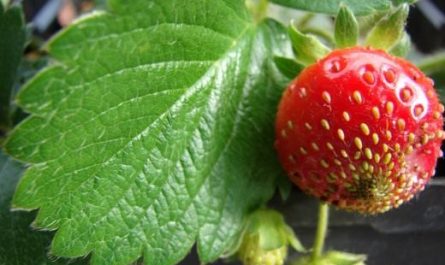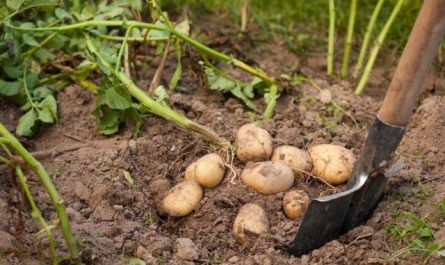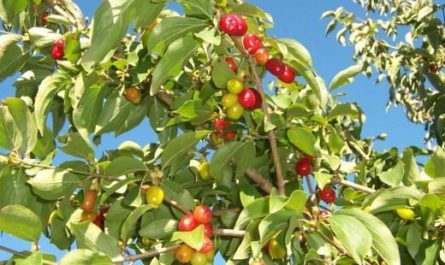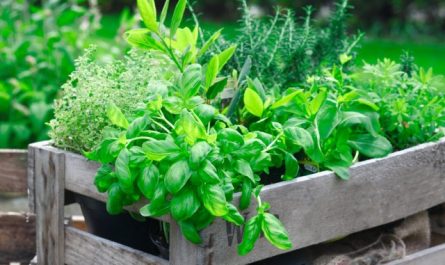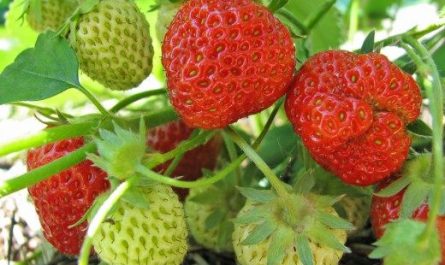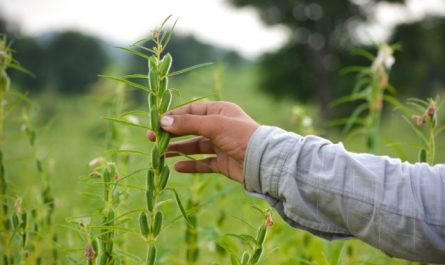I can’t imagine my garden without cucumbers. We really look forward to early cucumbers, they can’t even be compared with cucumbers bought in supermarkets. Therefore, we try to make do with our own harvest. Of course, in the autumn-winter period I won’t get my fresh cucumbers anywhere, I don’t have a heated greenhouse. But here the preparations made in the summer come to the rescue. I take the choice of cucumber varieties very responsibly, I try to select them so that the harvest ripens as early as possible, and fruiting lasts until the very cold weather. Every year I plant several proven varieties and hybrids and, of course, try new ones. In this article I will tell you about the cucumber hybrids that pleased me last season.
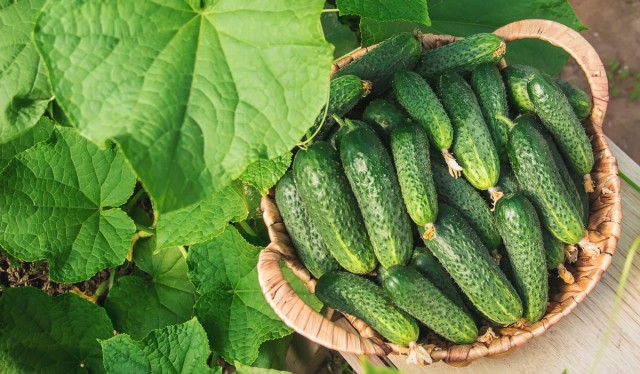
Breeders are constantly developing new wonderful varieties and hybrids, the main indicators of which are not only taste, but also productivity, unpretentiousness, and duration of fruiting. Modern hybrids are not bitter, do not overgrow. Therefore, I do not miss new products, I try to experimentally select the best cucumbers for my conditions.
When choosing cucumber varieties, I honestly prefer universal ones that can be used for both salads and canning. I distribute the harvest for preparations by size: small, beautiful cucumbers – for marinade and pickling, larger and uneven ones – for fresh and canned salads.
Lately we have especially come to love not pickled cucumbers, but salted cucumbers, without vinegar. This year I made preparations using the “cucumbers in cucumbers” method for the first time. I really liked the recipe – small cucumbers are layered with grated cucumbers, without brine. A very successful recipe – the cucumbers are tasty, both good commercial cucumbers and overgrown ones are used, it takes very little time to prepare such cucumbers.
I grow some cucumbers in a polycarbonate greenhouse – I try to plant the earliest cucumbers there and those that are distinguished by their prolonged fruiting. I also grow cucumbers in open ground and in so-called temporary shelters under non-woven material.
My greenhouse cucumbers
I will start describing the cucumbers that I liked this year with the greenhouse ones.
1. Cucumber “Bogatyrskaya Sila F1”
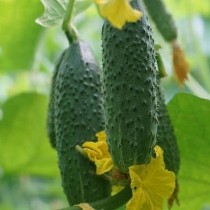
The hybrid is early-ripening, bunchy, with up to 8 ovaries per node. This hybrid has a high yield. There were many ovaries, they developed until the very cold weather. In total, we collected a good harvest of these cucumbers during the season.
Cucumbers are 8-12 cm, oval-cylindrical in shape. They are dense, juicy, without voids, with a small number of seeds. The skin of these cucumbers is quite dense, due to which they tolerate transportation well.
A hybrid of universal use, cucumbers can be eaten fresh, you can make various preparations. We liked that, compared to other varieties and hybrids, these cucumbers are stored for quite a long time, about two weeks, without losing freshness.
2. Cucumber “Grasshopper F1”
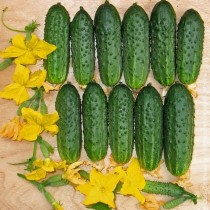
I have heard only very good reviews about this hybrid for a long time. This year I decided to try planting it and see if it is really that good. This hybrid can be planted both in open ground and in a greenhouse. I planted it in a greenhouse to get the harvest as early as possible.
According to the description, cucumbers begin to bear fruit on the 38-39th day after germination. Indeed, fruiting began on par with other ultra-early varieties. The hybrid is bunchy, the cucumbers are crispy, aromatic, about 10 cm long. If you collect pickles, then picking cucumbers 3-5 cm long should be done daily.
The hybrid’s yield is not the highest, there are much more productive ones. But the taste is excellent! Both fresh and canned cucumbers. The hybrid bore fruit until the very cold weather, and showed resistance to diseases. We ate our fill of fresh cucumbers and made a lot of preparations: pickles, marinades and various salads with cucumbers for the winter.
An interesting feature of this hybrid is that the cucumbers in the preparations remained bright green. The preparations turned out to be very successful, the cucumbers in them are crispy, tasty and beautiful.
We were very pleased with this hybrid, so we will plant it next year as well.
3. Cucumber “Liliput F1”
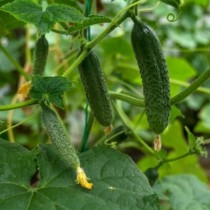
The hybrid is early, in my greenhouse it began to bear fruit approximately 38-40 days after sowing. An ideal option for those gardeners who prefer to collect miniature cucumbers, the so-called pickles.
The fruits are very small, neat, just right for pickling. The preparations turned out very beautiful. The cucumbers in the preparations are tasty and crispy.
It is characteristic that these cucumbers do not turn yellow when overripe, which is very important when there is no opportunity to harvest often. This hybrid is a bunch hybrid, with 7 to 10 ovaries formed in one node. The yield is quite high, according to the description – up to 11 kg per square meter. During cultivation, the hybrid showed resistance to diseases.
4. Cucumber “Champion F1”
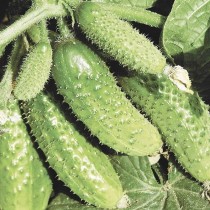
I really liked this hybrid from the Sedek agrofirm. The cucumber is very productive – it amazed me with the abundance of ovaries. According to the description, the hybrid yield is at the level of 25-28 kg per square meter. I did not weigh it, but there were a lot of cucumbers. In the greenhouse, fruiting continued until late autumn.
The use of cucumbers is universal: fresh and for canning. The hybrid is mid-season in terms of ripening, by the time of mass ripening of cucumbers we began to use most of the harvest for canning. Canned goods from these cucumbers turned out tasty, crispy, without voids.
In addition to the versatility of use, I liked that the plants are medium-sized. This greatly simplifies their formation and care. This hybrid justified its name, I will definitely plant it again.
Cucumbers that I grew under cover
In shelters under non-woven material I plant varieties and hybrids of cucumbers that are unpretentious and resistant to diseases. And the plants should also be medium-sized, they are very convenient to form in conditions of low shelter height.
5. Cucumber “Alekseich F1”
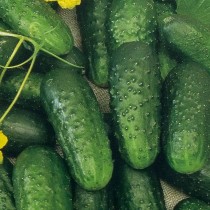
According to the description, it is an early hybrid (40 days). Indeed, it was one of the first to start yielding. The cucumbers are small, cylindrical, with few tubercles. The hybrid is bunchy, with 2-3 greens tied in each node. The cucumbers are 7-9 cm long. The cucumbers are dense, crispy, and very tasty. We ate them fresh and used them for canning. For the preparations, we collected small cucumbers, the so-called pickles, they are great for salting and marinating. The preparations with them turned out very tasty and beautiful.
The plants were compact, the side shoots were small, which made it much easier to care for the plants. The cucumber harvest was good, we collected a lot, and this hybrid bore fruit until the very cold weather.
I liked the resistance of the plants to diseases. When signs of diseases appeared on many varieties in late summer, these plants remained green and healthy.
I really liked the combination of taste characteristics, yield and unpretentiousness of the hybrid, I will plant it next year.
6. Cucumber “Spring F1”
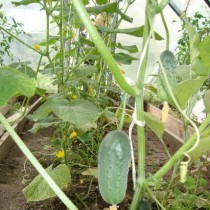
Very early hybrid (37-43 days from germination to harvest). According to the description – medium-sized, resistant to diseases. Therefore, I also planted it under covering material.
The cucumbers are small, only 7-8 cm, even with brown pimples. Very tasty, sweet, crispy. We liked them both fresh and in preserves. The assortment with cherry tomatoes and these cucumbers turned out very beautiful. These cucumbers are also great for pickling (without vinegar), not marinating. The salted ones turned out very tasty – crispy, aromatic.
The hybrid is very productive, I did not weigh it, but according to the description – up to 17 kg of cucumbers from one square meter. The yield is fast and uniform. This hybrid is not suitable for long-term fruiting.
7. Cucumber “Lightly salted F1”
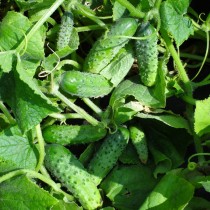
This hybrid is bee-pollinated, with partial parthenocarpy, i.e. it bears fruit even in the absence of pollinating insects. The plants are medium-sized, they can be grown in open ground and in so-called temporary shelters under film or other covering material.
The cucumbers ripened at a length of 10 centimeters, a hybrid with a bunch-type ovary (2 ovaries per node). The fruits are green with white stripes and large tubercles.
The cucumbers are crispy, juicy and tasty. They are good for canning, the dark green colour does not disappear during heat treatment. But we still used them little for canning. Like all bee-pollinated cucumbers, these cucumbers are so aromatic and tasty that we simply ate them fresh.
Fruiting was long and uniform throughout the season. The plants were not affected by diseases. So, the hybrid is good, I will plant more.
Cucumbers that I grew in open ground
In open ground, the yield of cucumbers is, of course, lower, but they are still much tastier than greenhouse ones. Therefore, I always plant several cucumbers in open ground.
8. Cucumber “Kids on a branch F1”
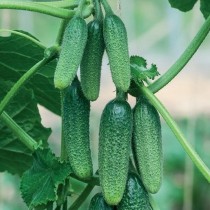
Mid-early bee-pollinated hybrid. It was bred quite a long time ago and is famous for its productivity and taste. I planted it in open ground on a trellis, without any shelter. It began to bear fruit approximately 45 days after germination.
I really liked the cucumbers. They have a wonderful taste and aroma. The fruits are finely tuberculated, dense, small in size, with few seeds. The cucumbers do not overgrow or turn yellow, they are all neat, as if selected – even. Such cucumbers are ideal for marinating and pickling. The preparations turned out to be of excellent quality, tasty, crispy and without voids.
The hybrid is productive, bunch type. In each node 2-3 cucumbers were formed. We harvested for quite a long time, until the cold weather. Therefore, I will definitely plant these cucumbers again.
9. Cucumber “Cheboksarets F1”
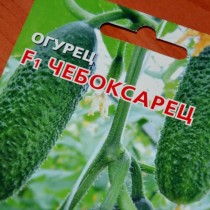
I also planted the cucumber “Cheboksarets F1” of Kirov selection in the open ground. According to the description, this is a very unpretentious hybrid: cold-resistant, shade-tolerant, resistant to diseases and temperature changes.
I decided to plant these cucumbers in a new way for me – “country style”. I had partially rotted compost piled at the edge of the bed. I covered it with old covering material. I cut 2 holes in the center and planted seedlings in them. I did not shape the plants, I directed the vines in different directions so that they would not get tangled.
The harvest was wonderful. And I liked the method, cucumbers, except for watering, do not need any care. And the variety is wonderful, unpretentious, resistant to diseases. Closer to autumn, when signs of diseases began to appear on some cucumbers under the covering material, the leaves of this hybrid were without signs of disease.
The cucumbers were aromatic, tasty, with thin skin. Dense, crispy cucumbers were perfect for preserves and salads. The cucumber fruiting was uniform and long. So, the experiment was a success, I will plant this variety, perhaps again in the same way.
Dear readers! There are many wonderful varieties and hybrids of cucumbers that have been developed today. When choosing seeds, pay attention not to the picture, but to the main characteristics: ripening time, yield, resistance to diseases. And whether a variety is suitable for your growing conditions can only be found out by growing it.
Good harvests to you!





